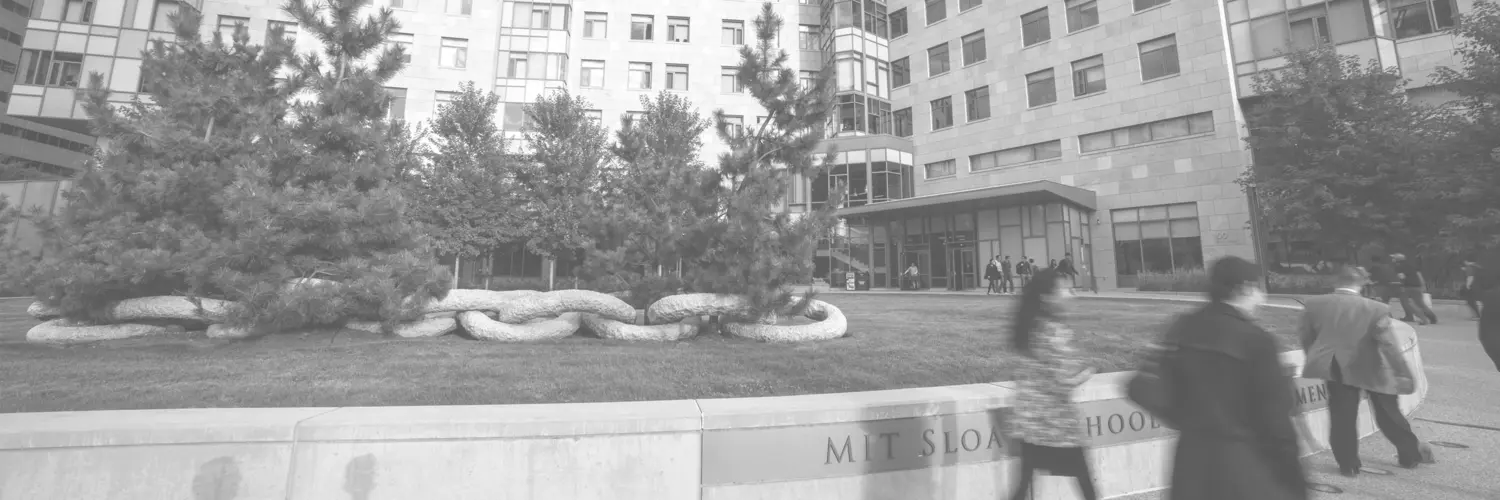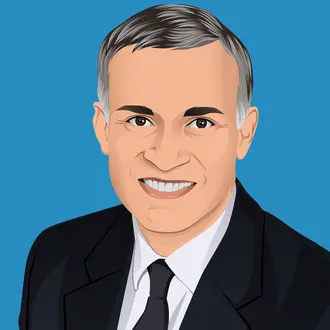The constant is that MIT Sloan faculty continue to lead the way in tackling some of today’s greatest challenges. What’s changing, and rapidly, are the tools and frameworks used to support these innovations. Faculty presented the latest insights from their work in corporate leadership, precision medicine, climate policy, personal finance, and deep tech during MIT Sloan Reunion 2025––a weekend of celebration and learning that convened over 1,500 alumni and guests from 46 countries.
Routing through organizational complexity
Nelson Repenning, PhD ’96, (Distinguished Professor of System Dynamics and Organization Studies; Faculty Director, MIT Leadership Center) cautioned that when the world changes but infrastructure doesn’t adjust accordingly, organizations will “end up working in the system rather than working around it.”
Repenning’s MIT Sloan Reunion 2025 session “There Has Got to Be a Better Way”—also the title of a forthcoming book co-authored with Donald C. Kieffer (Senior Lecturer of Operations Management)—detailed how Dynamic Work Design supports organizational agility. Borrowing principles from factory floor models, the framework advocates for managing intellectual work by replacing static processes with dynamic systems, resulting in increased efficiencies.
Problem-solving is the engine of dynamism.
Consider former GPS devices used in cars—while these tools could generate routes from Point A to Point B, they weren’t sophisticated enough to adapt to variables such as traffic delays or road closures. Today’s models can respond to driving elements in real time and generate reroute options. These tools adapt to changing conditions, both predictable and unforeseen. The underlying principle can be adopted by business leaders. While most organizations develop from a space of high adaptability, success and growth often leads to rigid systems that actually inhibit dynamism. Reinstating Dynamic Work Design requires intervention from leaders who are willing to drive innovation and develop creative solutions.
As Repenning reminded the group, “Problem solving is the engine of dynamism.”
Financial advice still matters
Antoinette Schoar (Stewart C. Myers-Horn Family Professor of Finance) began her session, “Financial Advice and Investor Beliefs,” with a difficult truth: “The average household lacks financial sophistication relative to the financial decisions they have to make.”
In a recent study, consumers with low levels of financial literacy were found to be more susceptible to poor advice from financial advisors than those with higher financial literacy. “There is a big gap between what the individual consumer knows and what the experts know,” said Schoar. “The average person is quite overwhelmed.”
In an era of technology aided assistance, Schoar and her colleagues developed a study to assess the complexities in relationships that are often a combination of online interactions, webinars and face-to-face between consumer and financial advisor. Study participants were first evaluated for existing financial knowledge, then for their perceptions about the benefits of “passive” or “active” investment strategies. “We designed financial advice videos that either are more what I would call ‘textbook advice,’ i.e. holding a passive portfolio with very low fees,” explained Schoar, “versus a more active strategy, of holding sector-specific portfolios that are trying to time the market.”
There is a big gap between what the individual consumer knows and what the experts know ... The average person is quite overwhelmed.
The results were unexpected. Subjects with low financial literacy rates were influenced by both passive and active financial advice symmetrically. In contrast, more financially literate participants were less receptive to advice that goes against their priors, especially if they had a prior that passive strategies are good but saw a video about active advice. In other words, it seems that well-informed participants were certain about their priors and did not like being shown conflicting advice.
In addition, the research shows that client willingness to update their beliefs about investment strategies depends on the incentives of the financial advisor––the advisors mention in the video if they receive commission-based compensation or are paid by assets under management. If advisors were perceived to have a conflict of interest, participants were less willing to update their beliefs based on the advice. This shows a reasonable skepticism about the objectives of advisors.
To navigate a marketplace that is often complex and demanding, Schoar’s work offers an important look into how the average consumer receives advice and makes financial decisions. “Well-structured financial advice can really help retail investors to achieve a better portfolio allocation, and with it, hopefully more savings by the time that they need their savings or they go into retirement.”
How can we best respond to the urgent challenge of climate change? A tool co-developed by MIT Sloan gives real-time answers
The earth’s climate is changing rapidly, and policy makers are tasked with ensuring a healthy and livable climate in the future. The En-ROADS (Energy Rapid Overview and Decision Support) simulator, which was co-developed by the MIT Sloan School of Management and Climate Interactive, is a tool that provides users with the ability to test and explore cross-sector climate solutions. En-ROADS, which offers a real-time look at how various policy choices could mitigate the effects of climate change, has delivered data-driven climate insights to decision makers around the globe. It has been shown to over 300,000 users in 164 countries—including more than 130 members of the U.S. Congress.
In the MIT Sloan Reunion 2025 session “Shaping Our Sustainable Future,” Bethany Patten, EMBA ’13, (Executive Director, MIT Climate Policy Center; Senior Lecturer) demonstrated how the simulator can test the impact of dozens of current or prospective climate policies—such as pricing carbon or improving agricultural practices—on hundreds of factors like energy prices, temperature, air quality, and sea level rise.
With the simulator running behind her, Patten asked attendees to propose climate policies. Hands shot up. One suggestion was to subsidize renewable energy sources. Patten adjusted the simulator scales to reveal that, with such a policy put in place, the average increase in global temperature would be reduced—though still a long way from the goal of less than 2°C, as established by the Paris Agreement in 2015. Other suggestions were to plant trees, implement carbon-pricing policies on a broader scale, and promote vehicle electrification. The simulator ran real-time climate models to reveal several outcomes from these policy suggestions, including a decrease in extreme heat days and a significant drop in populations at risk of hurricanes and typhoons. Session attendees saw that while their policy ideas might be hypothetical at the moment, their impact could be significant if implemented.
This is a valuable tool for testing assumptions, setting priorities, and informing investment choices within organizations and beyond.
Patten is the executive director of the MIT Climate Policy Center, an MIT Sloan center with the mission to serve as a trusted, non-partisan resource for policymakers who seek to advance evidence-based climate policy over the next decade. A $25 million investment from MIT Sloan helped launch the center in early 2024 to amplify MIT’s climate policy research across campus and support the MIT Climate Project, one of five special initiatives launched by the Office of the MIT President. “We’re coordinating and enhancing activities, amplifying the efforts of the Climate Project missions, as well as all other centers and initiatives across campus,” said Patten. “It’s a ‘whole of MIT’ approach.”
Patten encouraged session attendees to leverage En-ROADS to learn how best to reduce the climate footprint of their own organizations and communities. “This is a valuable tool for testing assumptions, setting priorities, and informing investment choices within organizations and beyond,” she explained.
Crossing the “Valley of Death” to new frontiers in drug discovery
Rare disease drug development requires adaptable frameworks and new ways of thinking. Speaking to a packed Wong Auditorium at MIT Sloan Reunion 2025—including several rooms of overflow seating—Andrew W. Lo (Charles E. and Susan T. Harris Professor of Finance; Director, Laboratory for Financial Engineering) shared insights from his research on financing “deep tech,” complex scientific and engineering challenges that have the potential to reshape society if solved.
“You probably all know the phrase: mens et manus,” said Lo at the start of his session, aptly titled “Mens et Manus et Moolah: Financing Deep Tech.” “The MIT motto means ‘mind and hand’ or theory and practice. And that’s what deep tech is all about.”
In the context of human health, it’s about discovering and developing treatments for diseases such as ALS, hemophilia, and cystic fibrosis—rare conditions that number over 12,000 and afflict the lives of more than 30 million Americans.
With the right kind of financing, the right financial structures, and the right narrative, we can all do the thing that we say we want to do but is surprising hard to come by: we can all do well by doing good.
“Big Pharma has pulled back from it,” Lo explained. “Venture capitalists don’t want to touch it.” From years of research, Lo has seen that securing and maintaining funding is often the primary inhibitor to success. New projects don't get the jumpstart they need, and current projects go unfinished. “There are all sorts of potential therapies out there that are languishing because we don't have enough funding."
Thus “The Valley of Death.” It has nothing to do with Southern California, Lo clarified. Instead, it’s a term used to refer to the fatal funding gap that exists between science and clinical practice in drug discovery. Simply put, developing solutions to financial barriers is a pre-requisite to treating rare diseases and improving the lives of so many. We must find a way to cross the funding valley and connect theory to practice—the mens et manus—with the moolah.
“With the right kind of financing, the right financial structures, and the right narrative, we can all do the thing that we say we want to do but is surprising hard to come by: we can all do well by doing good.”
Check out the MIT Sloan Reunion 2025 website to see more highlights and videos.



